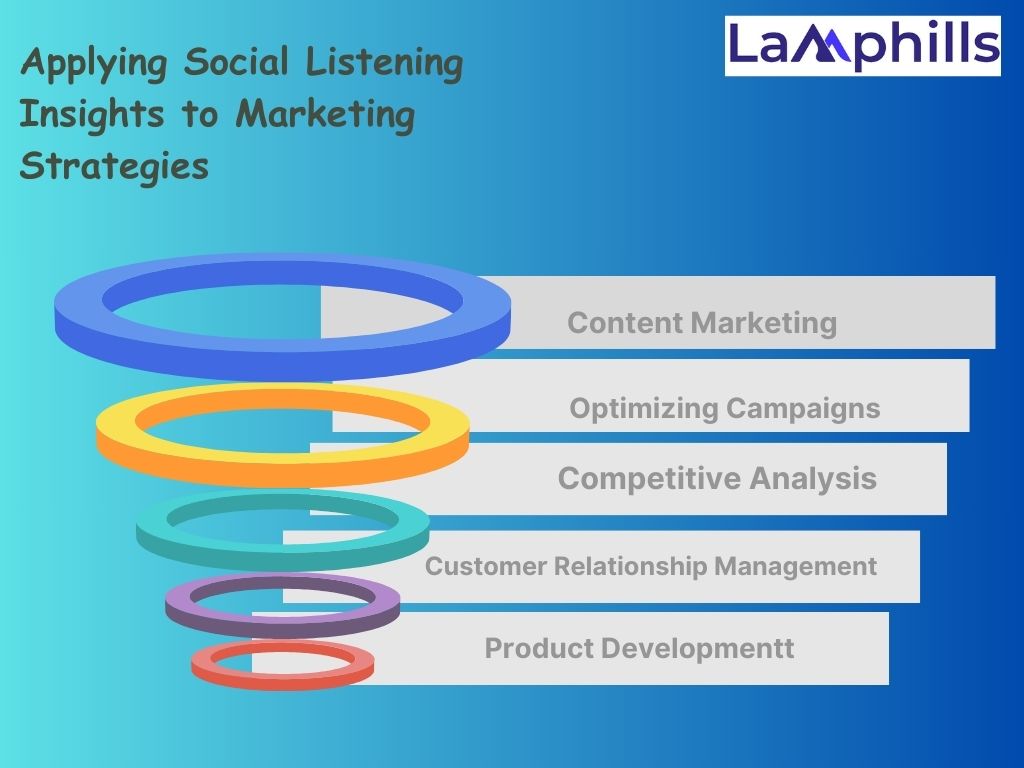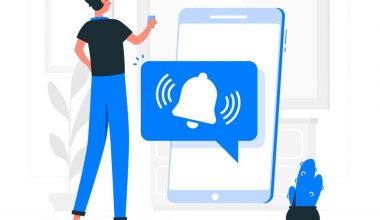Nowadays, it seems like there is an endless supply of data coming through the marketing sector. Website analytics panels display a continual stream of numbers, customer reviews pile up, and social media bursts with conversations. This alone is enough to give any marketer the impression that they are overloaded with information.
Let me tell you about a time when I understood how effective social listening software could be. I was working at a small software startup and attempting to figure out what people were saying about our latest product. We thought we had it all figured out—focus groups, surveys, the whole nine yards. But something was missing.
Our CEO, a dynamic individual with an eye for trends, suggested we test social listening software. “It’s like being a fly on the wall,” he told me. I was skeptical at first. I mean, isn’t social media just a lot of noise? But I gave it a chance, and let me tell you, it was like entering an entirely different world.
Now tell me, can you think of a time you dedicated weeks to creating the ideal blog content, only to watch drifts fly by after you pressed publish? Software for social listening could have changed everything for you. You may have customized your material for optimum impact by figuring out what your audience cares about and what trends are.
To solve similar issues in the future, this post will guide you through the process of discovering how social listening tools enable you, as a business person, or marketer, to create effective marketing campaigns and make well-informed choices. Relax, because I’m about to take on the role of a data detective and reveal the keys to successful marketing!
Key Points
- Social listening software empowers marketers to gather and analyze data from various online sources, allowing them to monitor brand mentions, identify trends, track competitor activity, and gather customer feedback in real time.
- Integration Leads to Actionable Insights: By integrating social listening data into marketing strategies, marketers can derive actionable insights that inform content creation, messaging, and overall strategy. This ensures that campaigns are targeted, relevant, and impactful.
- While social listening software offers numerous benefits, it’s not without its challenges. From data overload to technical issues, marketers must be prepared to overcome obstacles and maximize the benefits of the tool.
What is Social Listening?

Social listening software is a tool that allows businesses to monitor what customers are saying online. It monitors social media networks such as Twitter (X) and Facebook, as well as blogs, forums, and news websites. This software may identify mentions of a company’s name, products, or even specific themes to provide an overview of public opinion.
Let’s say you threw a large party and wanted to know what everyone was saying about it, social listening software would allow you to hear all of the conversations at once. It enables businesses to understand what customers like, dislike, or care about in real-time.
It involves monitoring your brand’s social media pages for customer feedback, direct mentions of your brand, and discussions about relevant keywords, subjects, competitors, or industries. This is followed by an analysis of the data. In the end, the results will help you discover the best strategies to increase your social media strategy, brand awareness, and social presence.
Now, imagine trying to make sense of all this data without assistance, which is similar to looking for a needle in a haystack. You might discover it, but it will take a long time and a lot of effort. That is to say, social listening software serves as a powerful filter, speeding the process and delivering the most relevant information.
Understanding Social Listening Software
Social listening tools can help you monitor several social media platforms in one place. You can check mentions of your brand, relevant keywords, and direct feedback through tags and DMs.
With social listening software, I could monitor what people were saying about our product in real-time. We began with basic searches for our company name, product name, and a few relevant keywords. What I discovered was eye-opening. People weren’t simply talking about our product; they were talking about it in ways we hadn’t expected.
One of our most significant discoveries came from a single tweet. A customer shared a snapshot of our product and commented on how it had brightened their day. But what drew my attention was the context—they discussed utilizing it during a long train ride.
Suddenly, it clicked: our product was perfect for people on the go, especially those who commuted. That one tweet helped us shape our entire marketing campaign around the idea of “making commutes better.”
This is to say, social listening is more than just counting likes and retweets. It’s important to understand what such interactions mean. I recall seeing a cluster of comments in which people used sarcasm to discuss the price of our product. If I hadn’t dug deeper, I’d assumed they were all favorable. However, the software’s sentiment analysis showed the irony. People adored our product but thought it was prohibitively expensive. This information enabled us to launch a discount campaign, and the complaints quickly evaporated. Our sales even saw a modest increase.
How Social Listening Software Works
Now, you might be wondering, “How exactly does this magic happen?”. Here’s the secret under the hood:
#1. Sentimental Analysis
The software assesses the conversation’s tone and classifies references as favorable, negative, or neutral. This helps you learn how consumers perceive your brand.
#2. Audience Demographics and Interests
Social listening software can offer information about your audience’s age, geography, and interests. This wealth of information enables you to develop tailored marketing strategies.
#3. Influencer Identification
The software can find major influencers in your business who are discussing subjects related to your brand. This opens the door to new collaborative opportunities.
In essence, the purpose of social media listening is to monitor important conversations on social media platforms, identify the underlying mood or sentiment, and then respond with a marketing strategy that positively influences sentiment. Also, the social listening process has three basic steps:
- Monitoring. This requires monitoring several social media platforms for mentions of brand names, themes, competitors, keywords, and products in social conversations. A company can perform this type of brand monitoring manually by checking social media sites daily or more regularly, or it can utilize a program to automate the process.
- Analysis. This is the phase that differentiates social listening from monitoring. Companies evaluate data obtained during monitoring to determine what customers like and dislike about a product or service, as well as to look for patterns and trends. There are several consumer sentiment analysis tools available that use automated technologies to provide businesses with insight into the emotion underlying the content their customers write or say.
- Response. Companies can then opt to respond. This could be a minor response, such as connecting with a customer online, or a significant one, such as reframing the entire brand strategy.
Also, Companies can use information gathered from social listening for a variety of purposes, including:
- Identify potential clients and dissatisfied ones.
- Evaluate customer experience (CX).
- Collect data for ROI monitoring or A/B testing campaign versions to evaluate performance.
Social Listening Software: Making The Right Choice
Selecting the social listening software that will best suit your needs might be difficult given the wide variety of options available. To help you make the right decision, keep the following in mind:
#1. What Issue Are You Attempting to Resolve?
To define the features and functionality the social listening software needs to offer, start by determining the social listening feature gap you’re aiming to address.
#2. Who is Going to Need to Use it?
Take into account who will use the program and how many licenses you’ll need while evaluating costs and needs. You’ll also need to determine if access is needed for the entire company or simply the marketing team. When that’s evident, it’s important to think about your priorities.
#3. Additional Tools Required for its Operation
Make it clear which tools you’re replacing, which ones you’re keeping, and which tools—like accounting, CRM, or HR software—you’ll need to interface with. It will be up to you to choose whether the tools must work together or if you may use a single, integrated social listening tool to replace several other ones.
#4. Which Results Matter?
Think about the outcome that the program must provide to be deemed successful. Think about the skills you wish to acquire or develop, as well as the success criteria you will use. One of the results might be the capacity to see performance more clearly. You may
compare social listening tool features until you’re blue in the face but if you aren’t thinking about the outcomes you want to drive, you could be wasting a lot of valuable time.
#5. How it Might Function in Your Company
Think about the software you choose in conjunction with your delivery strategy and workflows. Examine the things that are doing well and the areas that want attention that are producing problems. Keep in mind that every company is unique, so don’t assume that just because a tool is well-liked, it will function well for you too.
Social Listening Software: Factors To Consider
Obtaining the instruments is not necessarily the issue; rather, it’s the few things to consider when using them. To assist you, below are some, if not all, of the things to bear in mind.
#1. There’s a lot of information to be processed through
Because there is so much data to sort through, using social listening tools can be overwhelming. So, to develop strong insights and wise recommendations for your brand, you must set aside time to analyze all the data you collect.
#2. You Must Have a Well-Defined Goal
It is crucial to have a well-defined objective when using these tools. A clear goal can serve as a guide to help you find the information you require because it is simple to become lost in the sea of data. In addition, without a clear goal in mind, it will be impossible to monitor your performance. So, never start without considering the goal.
#3. The Cost Might Be High
Although certain software applications provide a free trial period, the most well-known ones can be pricey and might not be within your means. Therefore, choose the best social media listening software that can fulfill the minimum requirements without breaking the bank or the requirements you need to get your brand’s top social media data.
#4. Not Every Social listening Software is Made Equally
There are many social listening tools available, and choosing one can be difficult if you are unsure of the results you want to achieve. So, make time to investigate and book a test drive so you can narrow down the options to the ones that best meet your needs.
#5. Be Ready to Put your Newfound knowledge into Action
If you do nothing, nothing will change even if you have all this information at your disposal. So, you must make a plan for how you will use the data from these social listening tools to enhance your company. If not, it will merely be irrelevant data.
#6. When Using this Software, Be Patient
Though it takes time for social listening tools to start paying off, they are a terrific way to stay informed about how the market is seeing your business. Remember that you won’t get results right away from this long-term approach.
#7. You Must Be Consistent
Using social listening software consistently is essential. A weekly check-in on your social media accounts to see what people are saying about your business should be scheduled. As a result, you’ll be able to promptly handle any issues that arise and stay up to date with the most recent developments in your sector in this way.
#8. Assign a Committed Individual to Handle the Software
You can be certain that someone is constantly keeping an eye on your social media channels when you designate particular members of your marketing team with the responsibility of managing these social listening tools. Make sure the person in charge can sort through all of the data and ensure that actions are performed in real time depending on the information gathered.
#9. Be Ready to Adjust Your Strategy as Needed
Your social media plan should be adaptable enough to take into account adjustments made in response to the information obtained from social listening tools. If necessary, be ready to adjust your content, social media campaigns, and even your entire marketing plan.
Social Listening Software: Examples
Imagine having the ability to look into the thoughts of your clients to understand their motives, values, and interests. Don’t you think you would be far more skilled at creating meaningful messages? or recognizing the signs of a deteriorating brand reputation?
Even though it’s not quite possible, but you can get a good idea of what individuals are thinking by listening in on their social media chats. Because of this, social listening software is essential for analyzing social media content and drawing insightful conclusions.
However, the quality of your insights greatly depends on your choice of tools. So let’s narrow down some of the top social listening software that you should consider for your brand.
#1. Sprout Social
The social listening capabilities offered by Sprout Social provide you with an in-depth analysis of conversations that are relevant to your brand. Monitor brand-related discussions on all major social media platforms and other websites. Using automated algorithms, Sprout’s technologies analyze millions of data points to find insights that are pertinent to your brand.
You can discover the desires and attitudes of your target audience toward particular goods, initiatives, or subjects. In turn, this assists you in identifying unexplored company prospects and staying current with industry trends. To know who to engage, find the major opinion leaders and influencers driving the topic.
You can gain greater insight into consumer experiences and brand sentiment by having brand-specific discussions. To foresee a potential brand problem and have enough time to address it before it gets out of control, you may even set up personalized alerts. Furthermore, you may simply handle these problems in one location thanks to the integrated, strong social media management tools.
You can check out Sprout’s publishing and analytics features with a 30-day free trial. A specially designed plan for enterprise users includes social listening tools.
#2. Hootsuite
You can set up Hootsuite to monitor discussions, keywords, mentions, and hashtags on social media even if you have a free or Pro Plan.
Additionally, rather than constantly signing in and out of different social media networks, you can keep an eye on and react to discussions or mentions right from your social media dashboard.
By keeping an eye on your competitors and cultivating connections with social media influencers and possible brand evangelists, Hootsuite also enables you to stay informed about developments in your sector. One of the things Hootsuite users appreciate most about our platform is social listening.
#3. Brand24
Brand24 is a reasonably priced social listening software that helps you find points out of your business or those of your rivals. With just one click, you can start a conversation about any troublesome issues related to your business that are highlighted in comments by the tool. You can strengthen your product or service’s weak aspects and have a clear grasp of what customers are thinking about it thanks to sentiment analysis.
The application offers an automatically determined Influence Score for each person involved in any conversation about your business, making it easy to identify powerful advocates in your sector. Also, you can look for brand advocates in new markets you’re trying to break into with the help of the social listening tool.
Among Brand24’s essential capabilities is the ability to track hashtags on well-known networks like Instagram and Twitter.
#4. Awario
Price: $24/month+
Awario is a social listening software designed to increase brand recognition. It tracks keywords across multiple languages to function. Businesses looking to expand their global clientele through social media interaction will find significant success with this approach.
The platform offers everything you need to engage meaningfully with your target audience on social media in addition to keeping an eye on and answering comments.
Features and Compatibility of Awario
- Use the Social Selling tool to find postings where people discuss problems they’re having with products sold by your competitors or ask for recommendations for similar products.
- Maintain an up-to-date list of fresh leads that your sales team can follow up on using the Social Selling tool.
- Connect Awario with Facebook, Twitter, Instagram, Reddit, and YouTube profiles.
- Pair the software with your blogs, forums, and external websites using API.
#5. Agorapulse
Price: Free+
Agorapulse is a social media management software designed to let you publish on various social media networks, conduct social listening, keep an organized inbox, and examine intelligent data. Also, you can manage your YouTube, Instagram, Facebook, and Twitter accounts all in one location with the use of this program.
Features and Compatibility of Agorapulse
- When it comes to YouTube and Twitter search criteria, pay attention to what matters. Use boolean operators to drill down on details and obtain precisely what you need.
- Label items for quick retrieval and reaction, such as significant postings, competition activity, and customer comments, to help you organize your content strategy.
- Explore fresh reviews and clients with an infinite number of stored searches.
- Take control of comments on your Facebook and Instagram ads, and get statistics in chronological order as quickly as you want them.
#5. YouScan
Pricing: $12 000+/year.
Another AI-powered social media monitoring software is YouScan, which makes sure you’re continually informed about the performance and reputation of your company. The application tracks any social media activity pertinent to your business by analyzing both text and images. YouScan searches the entire Internet to provide you with every crucial insight and assist you in leveraging it for the benefit of your brand.
YouScan informs you of any notable conversations, trends, and mention spikes. Additionally, the tool provides automated tagging so you can handle new mentions whichever best suits your needs. YouScan’s auto-segmentation of mentions allows you to further optimize your social media workflow.
With its attractive Insight Wall, this social media monitoring tool makes it easy to map and present your SMM metrics. Because it’s a dashboard that can be customized, Insight Wall is a convenient approach for marketing teams to present their digital activity in an enticing and data-driven manner.
Supported platforms include blogs, news websites, review sites, forums, chat rooms, Instagram, Facebook, Twitter, YouTube, and VK.
Applying Social Listening Insights to Marketing Strategies

The more I used social listening software, the more I saw its potential. It’s more than just tracking trends and resolving crises, while both are useful. It’s also about developing relationships with customers. By focusing on what customers care about, you can design products and services that suit their needs.
According to Statista, 86% of marketers in the United States feel that social listening will be critical to their performance in the future years. That did not surprise me at all. In today’s increasingly digital world, comprehending what people say online is critical.
Social listening software allowed us direct access to our clients’ thoughts, feelings, and views. It helped us become more flexible, adaptable, and, ultimately, human in our approach to business. If you want to keep ahead of the curve, I cannot suggest it enough. It’s more than just another tech terminology; it’s a game changer.
Alright, so we now know that social listening tools uncover an array of valuable consumer data. But what practical application of this data can you make to enhance your marketing? Here are a few strategies for putting data to use:
#1. Content Marketing
Are you stuck with content? You can learn about audience preferences and trending topics by engaging in social listening. The secret to successful audience engagement is to produce something that they are currently actively searching for! You can monitor social media sites to see what people are saying about your business and sector. This is known as social listening. Are buyers praising the introduction of your new product? Or is there a growing dissatisfaction with your customer support? Using social listening software enables you to monitor conversations and take care of problems before they get out of hand.
#2. Optimizing Campaigns
Managing a campaign on social media? Social listening facilitates real-time performance tracking. To have the most impact, test what resonates with your audience and make quick adjustments to your plan. Because the digital scene is constantly changing, it’s imperative to remain ahead of trends. You can find conversations and topics that are trending that are relevant to your target audience by using social listening. This enables you to modify your content strategy and take advantage of fresh chances before your rivals do.
#3. Competitive Analysis
Do you want to remain on top of things? Utilize social listening to comprehend the tactics of your rivals and spot any weaknesses in their strategy. This enables you to present a distinctive value proposition and set your brand apart. Do you recall the proverb “Keep your enemies close and your friends close”? In the context of marketing, that also holds for your rivals! With the use of social listening software, you can monitor their behavior, comprehend their messaging, and even gauge the mood of their audience. You can use this insightful information to help you distinguish your business and create marketing plans that stand out in the competition.
#4. Customer Relationship Management
Software for social listening can serve as a precursory indicator of consumer displeasure. You can proactively resolve client complaints and forge stronger bonds by recognizing negative emotions. Do you remember the saying that goes, “Keep your enemies closer and your friends close”? It also applies to your rivals in the area of marketing, though! With the use of social listening software, you can monitor their behavior, comprehend their messaging, and even gauge the mood of their audience. This insightful information aids in brand differentiation and the creation of tactics that are genuinely unique in the marketplace.
#5. Product Development
Have you ever wanted to see inside your clients’ minds? You can use social listening! You can develop products that genuinely appeal to your target market by learning about the requirements and preferences of your customers.
Integrating Social Listening Data into Marketing Strategies
Software for social listening is a trigger for action rather than just a fancy data dashboard. This is how we can transform insights into tactics that have an impact:
#1. Data Analysis for Useful Insights
Analyzing the information you gather is essential to realizing the full potential of social listening. To help guide your marketing approach, keep an eye out for reoccurring themes, trends, and patterns. For instance, you can produce material that goes into further detail on a certain product feature if you notice a spike in social media mentions of it.
#2. Customizing Your Strategy
The days of general marketing messaging are long gone. You can modify your content and messaging to your audience’s tastes and interests by using social listening data. This entails developing campaigns that are specifically targeted to certain client segments to increase engagement and conversion rates.
#3. Real-Time Adaptation
The real-time insights that social listening can offer is what makes it so beautiful. Your marketing campaigns’ effectiveness can be monitored, and you can quickly adapt by seeing how your audience responds. Is something unfavorable developing regarding a recent promotion? Utilizing social listening software enables you to promptly resolve the matter and minimize any possible harm.
#4. Teamwork Is Essential
For your entire marketing team and beyond, social listening data is an invaluable resource. Collaborative approaches are fostered when sales and customer service teams are notified of these insights. As a result, customer care representatives can proactively handle any emergent issues discovered by social media monitoring, and sales teams can use social listening data to customize their pitches to specific consumer demands.
Case Studies: Social Listening in Action
This is a practical example of how social listening software can change your marketing strategies. Do you remember the 2022 #leggingsgate controversy? Customers on social media reported that a well-known athletic wear brand’s most recent collection of black leggings was completely see-through. Horrible photographs and nasty remarks went viral, sparking a major public relations issue.
Now, imagine if this brand had been using social listening software. They could have noticed the first hints of unhappiness on social media before things escalated. By analyzing the tone and content of these mentions, the brand could have quickly responded by postponing the launch or addressing the quality issues with customers.
This is only one illustration of the effectiveness of social listening. Another example: a company that specializes in healthy foods utilized social listening tools to identify a growing trend: consumers were looking for vegan and gluten-free alternatives. Based on this information, the company modified some of its existing goods and introduced a new line that addressed these dietary limitations. What was the result? Sales increased significantly, and customers felt truly heard and understood.
Overcoming Challenges and Maximizing Benefits
While social listening software is a game changer, there are a few issues to consider:
- Data Overload: Social listening can generate massive amounts of data. The goal is to concentrate on the most important discoveries and avoid being overwhelmed.
- Choosing the Right Tool: With so many social listening tools available, it can be difficult to determine which one is best for your purposes.
- When making a decision, consider aspects such as affordability, available features, and simplicity of usage.
- Integration: Make sure your social listening software works flawlessly with your existing marketing tools to provide a streamlined workflow.
Now, to address the issue, here are some suggestions for maximizing the benefits of social listening:
- Set Clear Goals: Before diving into the data, define your marketing goals and objectives. This will help you focus your analysis and identify the most relevant insights.
- Stay Focused: Don’t get bogged down by every single social media mention. Use the data to identify overarching trends and patterns.
- Be Action-Oriented: Don’t let the data gather dust! Use social listening insights to inform your marketing strategy and take concrete steps toward achieving your goals.
Benefits Of Social Listening Software
As technology advances, so will social listening software. The next step is combining artificial intelligence and natural language processing to examine massive amounts of data in real time. This will allow businesses to respond to trends and crises at unprecedented speed and precision.
However, the greatest benefit of social listening will be its ability to humanize brands. This is because companies can develop genuine relationships with their customers by understanding the conversations that are important to them and developing products and services that suit their requirements. It’s a journey that begins with listening and concludes with a stronger connection between brands and the people they serve.
So, the next time you hear someone discussing insights and analytics, keep in mind that the true story is found where the data and the human heart meet. Here are a few if not all the benefits of using social listening software, Below
#1. You understand where you stand with your audience
One of the first stages towards improving and strengthening your brand’s reputation is to learn how your target customer perceives your company and what you have to offer. A social listening platform provides insight into how online conversations about your products or services are conducted. This is due to the capacity to monitor several channels such as forums, blogs, review sites, and social media platforms.
#2. In-depth knowledge of Your Customers
Understanding your clients is the first step toward developing long-term relationships with them. This demands more than simply understanding their demographics or purchase behaviors. You also need to understand their interests, attitudes, and needs.
You can use social listening tools to monitor this feedback and get a clear understanding of what your customer’s pain points are.
#3. You identify Opportunities and Leads
Social listening software can also help with content marketing and uncovering new sales prospects. When you understand what people are saying about your business online, you can create focused marketing that addresses their needs. You can also discover potential clients and send them personalized messages.
#4. It Enables You to Respond Rapidly to Negative Reactions
Negative remarks will always occur, but how you respond to them tells volumes about your business. This means social listening software enables you to immediately recognize and respond to any negative feedback. This can help to transform a negative circumstance into a positive one.
#5. You Can Track Your Competitors
Social listening is more than just monitoring what people are saying about your organization; it also allows you to track your competitors. This allows you to learn from their techniques and avoid repeating the same mistakes. You may also observe where they are suffering and use that information to create stronger campaigns for your audience.
#6. Increase Client Satisfaction
Using social listening techniques allows you to immediately identify areas where your clients are dissatisfied. This allows you to take the appropriate steps to improve customer satisfaction. Furthermore, you may use the data acquired from social monitoring to develop marketing strategies that address specific problem points.
#7. Improved Relationships With Your Audience
Engaging with your audience on social media helps you create closer relationships. In this manner, you could turn one-time purchases into loyal customers. You may also utilize social listening technologies to generate buzz and create a community for your company.
#8. You Can Generate More Focused Content
If you want your material to be effective, ensure that it is relevant to your target audience. Social listening tools allow you to uncover trends and hot issues in your market instantly. This allows you to generate content that is more likely to connect with your audience.
#9. You Can Easily Discover and Resolve Issues
Social listening techniques are also an effective way to discover and resolve customer service concerns. Monitoring social media conversations for brand mentions allows you to identify issues as they arise and take immediate action to remedy them. This improves the overall customer experience and demonstrates that you care about your consumers’ satisfaction.
#10. You can Recognize Brand Ambassadors
Listening to social media will allow you to locate clients who are already raving fans and promote your business to their audience. These clients can then become brand ambassadors, promoting your company on their social media networks.
Is there a free social listening tool?
Brand Mentions is a tool designed specifically for brand monitoring, social media and online listening, and reputation management. This social media monitoring platform provides three free web tools to play with. The Social Media Tracker helps you find out who is talking about your business or competitors in the news and on social media.
Is Google Analytics a social listening tool?
Google Analytics is an important tool for any digital marketer. Providing details about social traffic and conversions, Google Analytics social media reports are an important resource to help you prove social ROI.
Can you automate social listening?
If you have an automated social listening strategy in place, you can easily ignore the trolls and skip to your potential consumers. The automation will save you the time of canceling out white noise that’s not necessary for brand building.
What is the difference between social listening and social analytics?
Social monitoring looks at individual social media mentions. Social listening goes further by interpreting all these mentions to deliver deeper and more valuable insights. For example, social monitoring could show an increase in social media posts over a month.
Conclusion
Social listening software is no longer a luxury, but rather a requirement. By delivering actionable insights about client behavior and preferences, it enables you to make informed decisions and meet your marketing objectives. Also, bear in mind that the most effective social listening tool for your brand is determined by your specific requirements and expectations. So carefully evaluate each of the options shown above to determine which is best for you.
Think of it as your hidden weapon—a tool that allows you to break through the distractions, understand your audience on a deeper level, and ultimately design advertising strategies that resonate and convert.
References
- influencermarketinghub.com
- blog.hubspot.com
- konnectinsights.com
- techtarget.com






